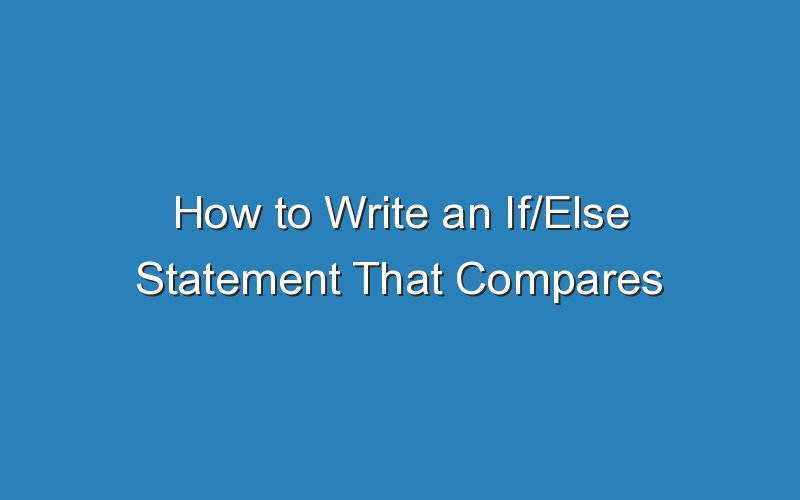To write an if/else statement, you need to create a variable called age, compare it with the value 65, and then add one if the value is higher than the maximum. For example, if age is seventy-three, add one to the variable seniorCitizens, and subtract one if age is under that limit. Then, if age is twenty-one, add one to the variable nonSeniors.
In the if/else statement, you’ll add one if the value is less than 18 years old, one if the value is between 18 and 64, and one if it’s sixty-five or older. If the value is greater than 65, you’ll assign a 1 to the variable age. If the value is below 65 years old, you’ll get a false result.
An if/else statement is a conditional expression in which the conditional statement is true or false. It must contain a character variable, which means that the value has to be encased in quotes. The following code creates a new variable named group from an existing variable called gpa. This variable takes two values: a zero for a minor and one for a senior.
To write an if/else statement for an if/else condition, start with a variable. For example, in a variable called age, you might assign a value to an int if it is less than 65, and a negative number if it’s greater than sixty-five. In the same way, an if/else statement may compare an age with 65.
For the if/else condition, you can simply compare two values. For example, you could add an if/else statement that adds a one to an adult if the individual is younger than 65, and a one to a minor if they are older. Then, a variable that adds an integer to the age of an adult is an int.
In the if/else condition, you can add a number if the person is a minor or an adult. You can also use an if/else statement to add an additional digit to a variable if the age is greater than 65. You can even use the if/else condition to compare an age with a number. You may also need to write an if/else statement that includes the number of a single digit.
In a similar way, you can write an if/else statement that identifies age by adding a single digit to the age of a person. Aside from adding a digit, you can use an int to represent each category. For instance, if the person is a child, the if/else statement will add one digit to the number.
In an if/else statement, you can use a number of different variables in an int value. If the age is less than eighteen, you will add one digit to the age of a minor. If the person is over eighteen, add a number to adults. For a senior, add a number to their age. If the person has a fever, he is a senior.
An if/else statement may contain multiple conditions. For example, it can compare the age of a child with a person. For instance, if an infant is younger than 18 and a teenager is older than eighteen, add a one to the age of the senior. If a person is older than sixty-four, it adds a number to her birthday.
An if/else statement can also include a else-if statement after the if-then statement. An else-if statement will be evaluated only if the previous expression is false. For example, if an age range is twenty-three, a group would have three groups: people over sixty-five, and those between forty-five and fifty-four.

